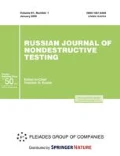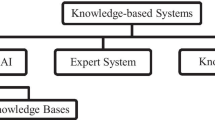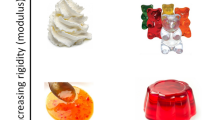Abstract
The recent increase in terrorist attacks realized using liquid explosives has made it important to develop quick and reliable methods that can distinguish between nonhazardous liquids and other liquids that can be used in these explosives. Since the stability and sensitivity properties of microwave systems are high, microwave frequency band is preferred to differentiate hazardous liquids from non-hazardous liquids. In this study, a noncontact system based on electromagnetic response measurements of liquids in microwave frequency band is proposed to develop a classification approach that can be used in liquid scanners. Naive Bayes, linear discriminant analysis, qualitative data analysis, support vector machine, sequential minimal optimization, K-nearest neighbors classification algorithms are used to classify liquids and their classification performances are analyzed. The results of the set of classification experiments prove the success of the proposed measurement method. As the results prove, K-nearest neighbors is the most appropriate classification algorithm for hazardous liquid detection. Since it can be easily implemented and its detection process is fast, a classification system based on the proposed approach can be very useful in airports and shopping malls.






Similar content being viewed by others
REFERENCES
Melnikov, Y., Avtonomov, P., Kornienko, V., and Olshansky, Y., Detection of dangerous materials and illicit objects in cargoes and baggage: current tools, existing problems and possible solutions, J. Homeland Secur. Emerg. Manage., 2011, vol. 8, no. 1. https://doi.org/10.2202/1547-7355.1889
Cardona, L., Jiménez, J., and Vanegas, N., Nuclear quadrupole resonance for explosive detection, Ingeniare Revista chilena de ingeniería, 2015, vol. 23, no. 3, pp. 458–472.
Miller, J. and Barrall, G., Explosives detection with nuclear quadrupole resonance, Am. Sci., 2005, vol. 93, no. 1, p. 50.
Kumar, S., Liquid-contents verification for explosives, other hazards, and contraband by magnetic resonance, Appl. Magn. Reson., 2004, vol. 25, nos. 3–4, pp. 585–597. https://doi.org/10.1007/BF03166550.
Espy, M., Flynn, M., Gomez, J., Hanson, C., Kraus, R., Magnelind, P., et al., Ultra-low-field MRI for the detection of liquid explosives, Supercond. Sci. Technol., 2010, vol. 23, no. 3, p. 034023. https://doi.org/10.1088/0953-2048/23/3/034023
Abidin, Z.Z., Omar, F.N., Yogarajah, P., Biak, D.R.A., and Man, Y.B.C., Dielectric characterization of liquid containing low alcoholic content for potential halal authentication in the 0.5-50 GHz range, Am. J. Appl. Sci., 2014, vol. 11, no. 7, pp. 1104–1112. https://doi.org/10.3844/ajassp.2014.1104.1112
Singh, S. and Singh, M., Explosives detection systems (EDS) for aviation security, Signal Process., 2003, vol. 83, no. 1, pp. 31–55. https://doi.org/10.1016/S0165-1684(02)00391-2.
Schulte-Ladbeck, R., Vogel, M., and Karst, U., Recent methods for the determination of peroxide-based explosives, Anal. Bioanal. Chem., 2006, vol. 386, no. 3, pp. 559–565. https://doi.org/10.1007/s00216-006-0579-y
Choi, K., Hong, T., Sim, K.I., Ha, T., Park, B.C., Chung, J.H., et al. Reflection terahertz time-domain spectroscopy of RDX and HMX explosives, J. Appl. Phys., 2014, vol. 115, no. 2, p. 023105. https://doi.org/10.1063/1.4861616
Windgasse, G. and Dauerman, L., Microwave treatment of hazardous wastes: removal of volatile and semi-volatile organic contaminants from soil, J. Microwave Power Electromagn. Energy, 1992, vol. 27, no. 1, pp. 23–32. https://doi.org/10.1080/08327823.1992.11688167
Mudhoo, A. and Sharma, S.K., Microwave irradiation technology in waste sludge and wastewater treatment research, Crit. Rev. Environ. Sci. Technol., 2011, vol. 41, no. 11, pp. 999–1066. https://doi.org/10.1080/10643380903392767
Liu, L., Application of microwave for remote NDT and distinction of biofouling and wall thinning defects inside a metal pipe, J. Nondestr. Eval., 2015, vol. 34, no. 4. https://doi.org/10.1007/s10921-015-0313-9
Lucic, B., Basic, I., Nadramija, D., Milicevic, A., Trinajstic, N., Suzuki, T., et al., Correlation of liquid viscosity with molecular structure for organic compounds using different variable selection methods, Arkivoc, 2002, vol. 2002, no. 4, pp. 45–59. https://doi.org/10.3998/ark.5550190.0003.406
Tekbas, M., Toktas, A., and Ustun, D., A formulaic model calculating the permittivity of testing materials placed on a circular patch antenna, in 2019 XXIVth Int. Semin./Workshop Direct Inverse Probl. Electromagn. Acoust. Wave Theory (DIPED), 2019. https://doi.org/10.1109/DIPED.2019.8882582.
Büyüköztürk, O., Yu, T.-Y., and Ortega, J.A., A methodology for determining complex permittivity of construction materials based on transmission-only coherent, wide-bandwidth free-space measurements, Cem. Concr. Compos., 2006, vol. 28, no. 4, pp. 349–59. https://doi.org/10.1016/j.cemconcomp.2006.02.004
Al-Mously, S.I.Y., A modified complex permittivity measurement technique at microwave frequency, Int. J. New Comput. Archit. Appl., 2012, vol. 2, pp. 389–401.
Li, Z., Haigh, A., Soutis, C., Gibson, A., and Sloan, R., A Simulation-assisted non-destructive approach for permittivity measurement using an open-ended microwave waveguide, J. Nondestr. Eval., 2018, vol. 37, no. 3, https://doi.org/10.1007/s10921-018-0493-1
Jiang, Y., Ju, Y., and Yang, L., Nondestructive in-situ permittivity measurement of liquid within a bottle using an open-ended microwave waveguide, J. Nondestr. Eval., 2015, vol. 35, no. 1. https://doi.org/10.1007/s10921-015-0322-8
Derousseau, M., Laftchiev, E., Kasprzyk, J., Rajagopalan, B., and Srubar, W., A comparison of machine learning methods for predicting the compressive strength of field-placed concrete, Constr. Build. Mater., 2019, vol. 228, p. 116661. https://doi.org/10.1016/j.conbuildmat.2019.08.042
Aydın, E.A. and Keleş, M.K., Breast cancer detection using K-nearest neighbors data mining method obtained from the bow-tie antenna dataset, Int. J. RF Microwave Comput.-Aided Eng., 2017, vol. 27, no. 6. https://doi.org/10.1002/mmce.21098
Prasad, V., Rao, T.S., and Babu, M.S.P., Thyroid disease diagnosis via hybrid architecture composing rough data sets theory and machine learning algorithms, Soft Comput., 2015, vol. 20, no. 3, pp. 1179–1189. https://doi.org/10.1007/s00500-014-1581-5
Fatemi, M.H. and Ghorbanzad’e, M., Classification of drugs according to their milk/plasma concentration ratio, Eur. J. Med. Chem., 2010, vol. 45, no. 11, pp. 5051–5055. https://doi.org/10.1016/j.ejmech.2010.08.013
Kim, S., Kwak, J., and Ko, B., Automatic classification algorithm for raw materials using mean shift clustering and stepwise region merging in color, J. Broadcast Eng., 2016, vol. 21, no. 3, pp. 425–435. https://doi.org/10.5909/JBE.2016.21.3.425
Balabin, R.M., Safieva, R.Z., and Lomakina, E.I., Gasoline classification using near infrared (NIR) spectroscopy data: Comparison of multivariate techniques, Anal. Chim. Acta, 2010, vol. 671, nos. 1–2, pp. 27–35. https://doi.org/10.1016/j.aca.2010.05.013
Maione, C., Barbosa, F., and Barbosa, R.M., Predicting the botanical and geographical origin of honey with multivariate data analysis and machine learning techniques: a review, Comput. Electron. Agric., 2019, vol. 157, pp. 436–446. https://doi.org/10.1016/j.compag.2019.01.020
Dos Santos, J.C.A., Dias, M.H.C., Aguiar, A., and Borges, I., Jr., Using the coaxial probe method for permittivity measurements of liquids at high temperatures, J. Microwaves Optoelectron. Electromagn. Appl., 2009, vol. 8, pp. 78–91.
Mitani, T., Hasegawa, N., Nakajima, R., Shinohara, N., Nozaki, Y., Chikata, T., et al., Development of a wideband microwave reactor with a coaxial cable structure, Chem. Eng. J., 2016, vol. 299, pp. 209–216. https://doi.org/10.1016/j.cej.2016.04.064
Author information
Authors and Affiliations
Corresponding author
Rights and permissions
About this article
Cite this article
Ebru Efeoglu, Gurkan Tuna Detection of Hazardous Liquids Using Microwave Data and Well-Known Classification Algorithms. Russ J Nondestruct Test 56, 742–751 (2020). https://doi.org/10.1134/S106183092009003X
Received:
Revised:
Accepted:
Published:
Issue Date:
DOI: https://doi.org/10.1134/S106183092009003X




